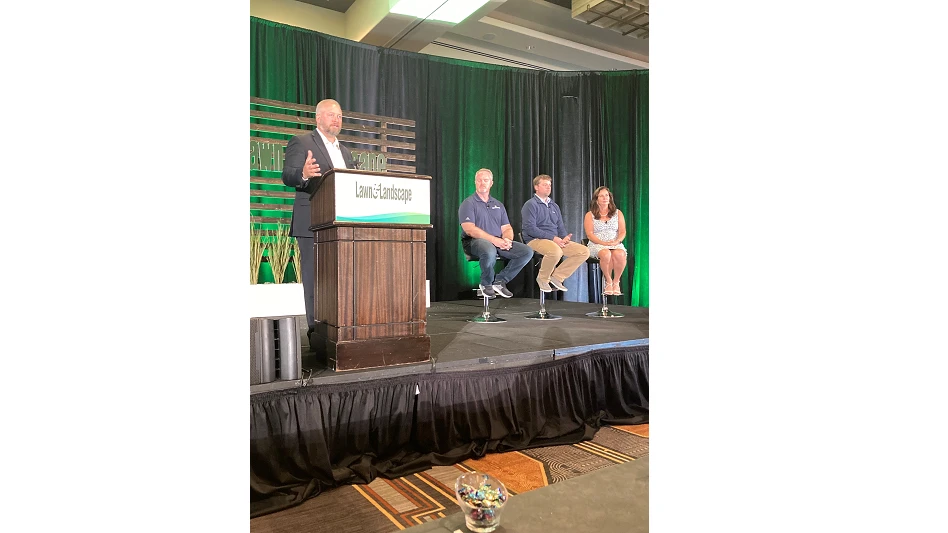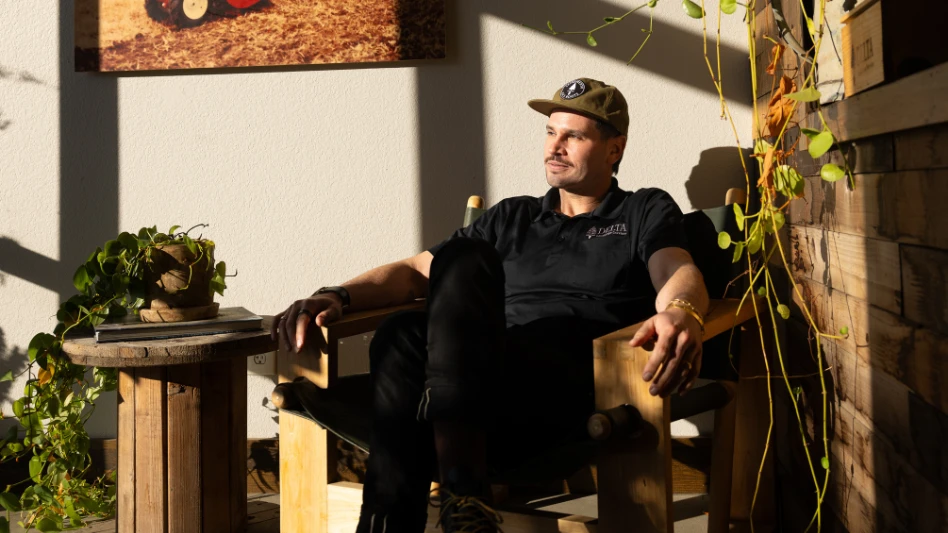
Janet DeNicola believes implementing autonomous mowing is the easy part; adoption is much tougher.
“(When you’re implementing), you get good training, you get explained how you need to lay your perimeter wire, and you get good training on the people that are going to need to maintain them,” says DeNicola, the chief technology officer at The Greenery in South Carolina. “Adoption is a whole different animal. Adoption is cultural and involves people and how we think about it in our company. You still have to get everyone marching in the same direction.”
DeNicola admitted to Lawn & Landscape Technology Conference attendees that she’s still trying to get everyone fully on board. Her co-panelists, all speaking during the “Analyzing Autonomous” session, seemed to be in the same boat. Michael Mayberry, the CTO at Level Green, says executives trying to incorporate robotic mowers should start the process of easing nerves now – it could be a bumpy road.
“It’s really important to talk to your crews now about what’s happening because you need to get their buy-in,” Mayberry says. “Their mindset may be that these robots are going to replace me.”
And that’s not the case, Mayberry adds. He, DeNicola and Ben Collinsworth from Yellowstone Landscape all believe autonomous mowing could actually enable crews to do more work.
IMPERFECT IN THE PRESENT. Collinsworth began looking into robotic mowers two years ago, and when research at the time indicated markets would more commonly have them by now, Mayberry started his search three years ago. DeNicola says she started weighing robotic mowers in 2017, and the first one went out into the field in 2019.
She says she narrowed down the scope of what she wanted the mowers to do or have. For her, it was all about safety, ensuring it had lights on it, and whether or not it had smartphone controlling capabilities. Of course, price also factored into the equation.
DeNicola did not see an immediate return on investment with the mowers. It was more about getting the process right than trying to roll them out widescale.
“It’s such a learning curve. It’s going to take a lot to get them up and running,” she says. “To be successful, just buy one and put it on one property that you trust so that if it flops, it’ll be okay. Pick a client you trust and have a great relationship with.”
Mayberry says there were issues he didn’t think would come up that did when they got their robotic mowers. For example, his crews aerated the perimeter wires by accident even though they knew they were there. Also, they deployed their mowers on a large sports field (DeNicola says her machines wouldn’t get to pointy areas of residential properties) but the machines kept getting stuck in soccer nets. To combat this, they’d sit on the property and just watch the machine go. That actually helped because it was seen as a major morale victory if they fixed the problems, Mayberry says.
“When we did have challenges we went out there to watch what was happening,” Mayberry says. “It’s about watching what’s going on and making small adjustments.”
For Collinsworth, he acknowledged during the session that labor was a major factor in opting for these mowers, adding that “we all have different ways to solve it.” But reassuring current employees that their jobs are safe is important.
“There’s many ways to fix (labor), but this is part of the solution,” Collinsworth says. “For me, it’s messaging, it’s going out and telling people the benefits of what this can do in the future even if it’s imperfect in the present.”
CLIENT DEMANDS. Of course, the other side to consider is client expectations. DeNicola says reminding clients up front that there’ll be a learning curve helps temper those demands. But the end result is totally worth it for the client, as a traditional mowing crew comes by once a week, but automowing is done three times a week. The grass never looks unkempt.
“Once you’ve got things cooking along, the client has a totally better experience with the product. The grass looks awesome all the time,” she says. “The end product is superior…not to mention (the robomowers) are quiet, they’re not intrusive, all these other benefits.”
DeNicola adds neighborhood associations might be quick to adopt these mowers, too, because then they look like a progressive area to live. The Greenery slapped logos on their machines and has constant branding going on near tennis and pickleball courts.
For clients, that could be the ultimate win-win: It’s branding for you and it’s image for them.
“It’s very focused-forward, it’s environmentally great,” she says. “You can sell it lots of ways.”
Collinsworth says it’s demoralizing for his crews and clients alike when you get them excited for the machines and then something goes wrong, but working through that is vital. He says 30-50% of the work his company currently does could be automated, but he wants to add even more properties and work that could be automated to increase that percentage.
“‘Just give me back my old mower,’” Collinsworth has heard them say.
Mayberry believes that even though his clients are buying into it in droves yet, it’s going to become widely popular. He’s actually lost some revenue on properties where they implemented robomowing, but it’s still done with an eye to the future.
When autonomous mowing is more popular, Mayberry believes his company won’t be one still trying to figure out how to set up and operate the machines. He encouraged attendees to all go home and figure out which properties might be good candidates to try out autonomous mowers.
“For the future, it’s worth it. When it goes widescale, we aren’t figuring it out. It will be economically beneficial at that point.”
Latest from Lawn & Landscape
- Wilson360 adds Daniel Grange as new consultant
- Batman and business
- CH Products releases new tree stabilizer
- Savannah Bananas founder Jesse Cole to speak at Equip Exposition
- Catch up on last year's Benchmarking report
- Davey Tree promotes Kevin Marks as VP of Western operations
- Bobcat Company names 2025 Dealer Leadership Groups
- Green Lawn Fertilizing/Green Pest Solutions awards employee new truck for safe driving





